Cough up the voucher data, Florida, pt 1: Have we really hit 46% grift inflation in per-voucher cost?
There's a Florida-shaped hole in the national data picture and discussion about vouchers. But when you look hard into the void, you can see the faint outlines of a major, major political scandal.
“The Florida Tax Credit Scholarship and the Family Empowerment Scholarship programs are the largest private school scholarship programs of their kind in the United States” — from the website for Step Up for Students, the Florida “charity” that doles out most of those Florida school vouchers on commission, but provides little data on them.
There are a number of images in this article that may cause the email to truncate. Please click through to the website if you have an issue.
The best data available — which is sketchy, bad data — makes for striking conclusions about Florida’s no-oversight, appallingly bad voucher programs and schools.
Despite great expansion of eligibility and hard, anti-public school selling, overall use of Florida private school vouchers is down from 171,040 kids in 2019-20 to 169,188 in 2021-22 — a 1.1 percent decrease.
Despite the decline in usage, overall spending on vouchers is up 44 percent from 2019-20 to 2021-22, from $1.15B to $1.66B.
Spending per voucher has grown a whopping 46 percent, from $6,725 per kid to $9,820 per kid.
There are 39,000 “missing” McKay and Gardiner vouchers for kids with disabilities, compared to 2019-20.
The voucher program that people most understand as a “voucher” program — the Florida Tax Credit (FTC) program — is plummeting in enrollment. It’s down 21 percent since 2019-20.
That might be because FTC schools, collectively, produce a 61 percent 2-year and 75 percent 3-year program drop out rate, according to the closest thing to Florida voucher study ever done.
I can document each of those things — and will in the next few minutes — with sources provided haphazardly by various Florida voucher stakeholders.
But I want you to come with me on the journey, if you don’t mind.
I want you to see for yourself how difficult Florida — the vicious, over-testing, school grade state — makes it for taxpayers, parents, lawmakers, kids, or reporters to develop informed judgments about its voucher programs and schools.
Do the best we can with what SUFS spits out
Most of the data fragments we’re going to use come from Step Up for Students (SUFS), which is essentially the Florida state School Board of vouchers. The long-time “superintendent” of vouchers is Jeb Bush-henchman Doug Tuthill.
In that role, Tuthill and SUFS do essentially nothing but write checks and collect commissions and sip Chardonnay at fancy choice conferences and protect their very lucrative grift. Step Up for Students is a high pressure sales organization more than anything else. It’s the time-share operator of education, which works hand-in-hand with Florida legislators to drive vulnerable people into terrible “schools.”
Tuthill and his staff provide no quality oversight or meaningful customer service at all. So it’s hardly surprising they provide no decent, authoritative data sources.
As I back up each of those points I led with, I’m going to use three key images.
Here’s the first, which I put together from multiple Step Up for Students/Florida DoE sources. The 21-22 part comes directly from “research highlights” and “fast facts” on the SUFS website. The 19-20 enrollment numbers come from here, here, here, and here.
The crucial thing to understand about this speadsheet is Florida had four distinct voucher programs with at least 14,000 kids in them in 2019-20. Today it has only two voucher programs with more than 14,000 kids. To repeat: Florida recently smushed its old voucher system into an incompatible system that really just has two vouchers. This makes apples-to-apples usage and spending comparisons very difficult, but not impossible.
We’re also going to look at the following enrollment chart from SUFS, found here. Admittedly, this is more historical enrollment data than I’ve ever seen from the very data-shy grifters at SUFS. But it’s still very, very incomplete.
You may notice that it’s missing some voucher categories, both in 2019-20 and 2020-21. So its usage growth trajectory is meaningless and inaccurate. This chart appears to factor out any vouchers for children with disabilities, focusing only on “income-based” vouchers. We’ll address that in a second.
And then we’ll look at this chart of total spending on vouchers from a recent report by the Florida Policy Institute. You can see the spending surge in 2021-22, which is completely divorced from usage. This chart accounts for all the voucher categories.
Behold, 46%voucher grift inflation
To repeat, here are the key takeaways when we look at those three images together:
Overall use of Florida vouchers is down from 171,040 kids in 2019-20 to 169,188 in 2021-22 — a 1.1 percent decrease.
Overall spending on vouchers is up 44 percent from 2019-20 to 2021-22, from $1.15B to $1.66B.
Spending per voucher has grown a whopping 46 percent, from $6,725 per kid to $9,820 per kid.
Moreover, the voucher program that people most understand as a “voucher” program — the Florida Tax Credit (FTC) program — is crashing in enrollment.
FTC is down about 21 percent from 2019-20. It’s lower than it’s been since 2015-16. Note the red above on the middle graph. Here it is again.
But wait Billy, you might say: that red and blue chart above only shows 120,165 kids in the FTC and “Family Empowerment Scholarship” (FES) in 2019-20.
True enough.
But in 2019-20, the Gardiner and McKay voucher programs — two large Florida vouchers categories aimed at students with disabilities — still existed.
Florida killed Gardiner and McKay as distinct things in 2021 and rolled them up into the tax-funded FES program, which itself split into two parts — FES for Economic Options (FES-EO) and FES for Students with Unique Abilities (SUA). Florida also opened FES vouchers to higher income people.
You can see the spending for the former McKay and Gardiner vouchers below in the light blue and yellow blocks of the chart. It appears that the Florida Policy Institute was able to continue accounting for McKay spending, even though McKay no longer exists and seems to be rolled up into FES-SUA. (And if that doesn’t make your head hurt, you’re a stronger person than me.)
As I noted above, I found the 2019-20 legacy McKay/Gardiner enrollment numbers from multiple different historical SUFS and related sources — and entered them in my spreadsheet shown below. As you can see, there were almost 45,000 Gardiner/McKay kids in 2019-2020. Where did they go?
Maybe they’re all in the two strains of FES. But that’s a very messy supposition to verify. And if so, it’s a scandal in its own right.
Where are the 39,000 missing Gardiner/McKay kids? — and other voucher grift questions.
As I mentioned, the FES in 2021 split into an “economic opportunity” branch and a “students with unique abilities branch.”
The “Family Empowerment Scholarship for Students with Unique Abilities” appears to be the specialized successor to McKay and Gardiner within the FES, although it’s only spelled out for McKay. Here are two screenshots from the Florida DoE:
Again, those two programs in 2019-20 served about 45,000 kids. Today’s FES-SUA — the only disability-targeted voucher — only has 5,220 “funded” students.
And that just leads to all sorts of questions we can’t answer from Florida’s scant voucher data. Here are a few:
Where are the other 39,000 Gardiner/McKay kids?
Did they just get rolled up into FES-EO, the “non-disability” voucher?
What disability/special education services are they getting?
Why on earth is the cost per voucher now 46 percent higher than it was three years ago?
Who are the kids in the blue of the general education FES. Are they wealthier, whiter kids now getting tuition subsidized at the few traditional private schools that aren’t scams, like most FTC voucher schools are?
Why is FTC enrollment collapsing?
Has there been some sort of transfer from tax-credit FTC to tax-funded FES for accounting purposes?
Or does it have something to do with the fact that the FTC program has a 61 percent 2-year drop out rate, according to the only “study” ever done.
Is that because of schools like those I showed you in my “Endtimes Academies” documentary about Florida voucher schools and the Orlando Sentinel showed you in its “Schools without Rules” reporting?
Finally, where is all this dark blue money going today?
Is Florida’s voucher model pivoting away from scamming poor kids with fake “escape” from public schools to subsidizing wealthier kids already attending the handful of legitimate, decent private schools? (I think, yes, and we’ll explore that in part 2.)
A Florida-sized hole in the national voucher narrative
With the very limited “data” — marketing one-pagers mostly — that Florida and SUFS provide, it’s impossible to answer the questions I posed above with anything approaching numerical or narrative precision.
We’re all at the tender mercy of Florida/SUFS’ honesty in assessing these few numbers and trying to contort them into something that tells an accurate public story.
I had to give you a tortured, speculative account of voucher growth because there are no publicly available, authoritative datasets to explore. We have to take the grifters’ word for it and extrapolate as best we can from what they put out for the purpose of their sales quotas.
Now take a look at at the chart below shared by school voucher expert Josh Cowen, a professor at Michigan State University.
Notice what studies of Ohio, Louisiana, Indiana, and Washington D.C., show about voucher programs in those states and their measurable “achievement” effect on kids. Choosing to take a voucher is like choosing to experience the aftermath of a natural disaster, as it relates to measurable outcomes.
Now, notice who is missing from that chart: Florida, America’s largest voucher program. That’s by design.
Make no mistake, SUFS and Jeb Bush’s education mafia do not want anything approaching a Florida voucher full story told. Because it’s very bad. Observation and the limited data we have clearly tell you that much.
But shouldn’t we know much more about “the largest private school scholarship programs of their kind in the United States?”
Consider that question in light of a seminal scholarly article Cowen recently wrote about how bad voucher programs are in other states. Key excerpt:
In small doses, years ago, vouchers seemed like they might work, but as more states have created more and larger voucher programs, experts like me have learned enough to say that these programs on balance can severely hinder academic growth — especially for vulnerable kids.
I am an education policy professor who has spent almost two decades studying programs like these, and trying to follow the data where it leads. I started this research cautiously optimistic that vouchers could help.
But in 2022 the evidence is just too stark to justify the use of public money to fund private tuition.
Florida fears *any* scrutiny of its vouchers and its grifters
Florida is afraid to collect and share any raw public performance or oversight data about its voucher programs because Florida (and Doug Tuthill and Jeb Bush and Ron DeSantis) already know Florida vouchers (particularly the “academic” rather than disability vouchers) are unspeakably corrupt and of negative educational value.
I took a one-county deep dive on how bad FTC is and has been in my five-part “Jeb Crow” series on vouchers.
Florida is afraid to let you see the data that creates a 61 percent 2-year voucher drop out rate. Florida is afraid of the voucher gravy train ending very badly one day.
It should be.
“Make Doug Tuthill famous” was my political advice to Democrats before they collapsed in Florida in ‘22. It remains my advice today. Use his name and vouchers in the same sentence with words like “audit” or “grand jury.”
Nothing illustrates Florida’s fundamental corruption as a state and a government like its voucher program. And its opaqueness is the key to its survival and its grift.
The biggest education scandal in American history
If we ever get real data for Florida vouchers and voucher schools, I suspect Doug Tuthill and SUFS and the entire JebSantis model will own the biggest scandal in American education history, which is this, in my view:
The “largest private school scholarship programs of their kind in the United States” are a shadow system of Florida “public” schools so bad and so corrupt and so without oversight of basic quality that the median private school in Florida isn't even a school.
It's a pre-Brown v. Board-style room in a church or an abandoned 7-11 where a bunch of kids stare at computer screens to duck punitive standardized testing imposed on the real public schools while an adult or two collects a state or corporate tax-sheltered revenue stream.
We’ll explore that a bit more in part 2, along with an odd cognitive dissonance from voucher opponents about what “private” means.
And I’ll remind you that Ron DeSantis is on-record declaring all those Florida strip mall store fronts and church rooms to be “public schools” and wasting your money on them.
We need to scrutinize them just like we scrutinize public schools.

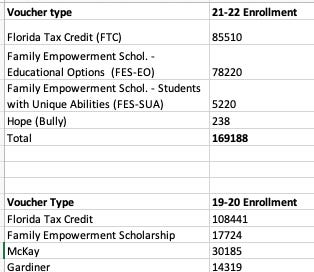



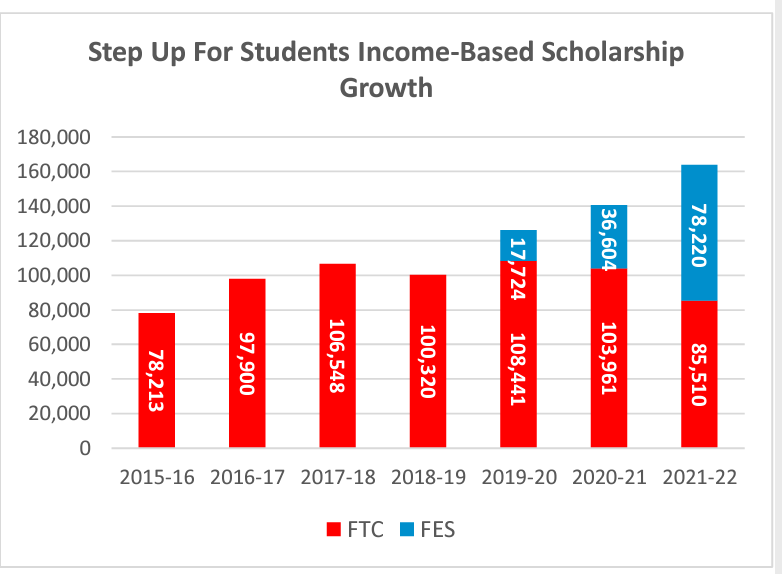

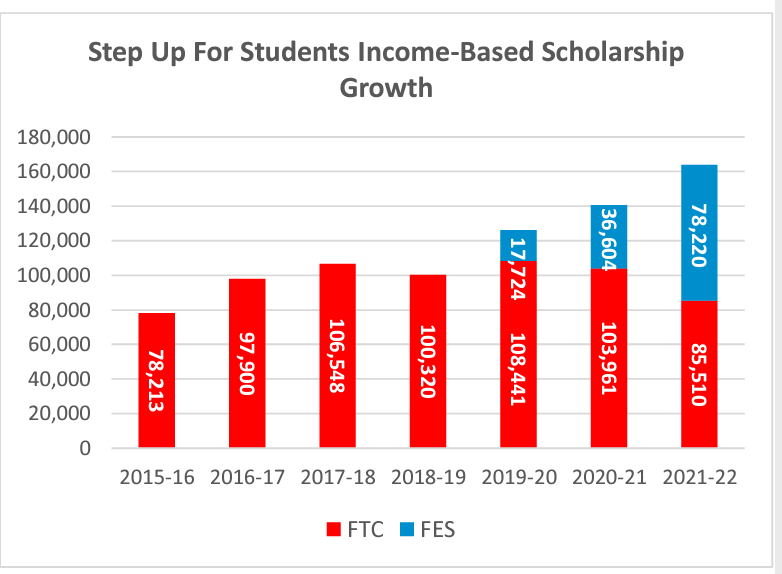
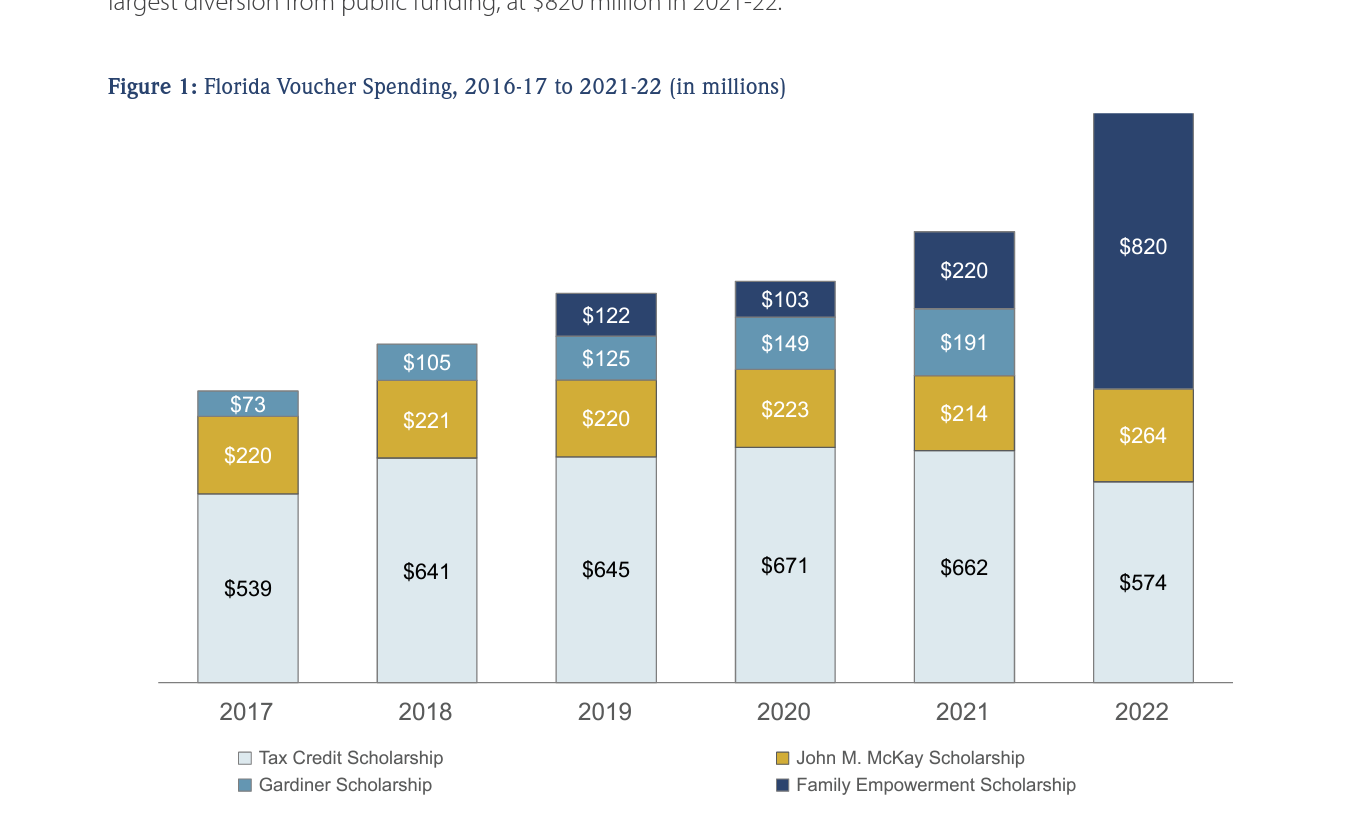
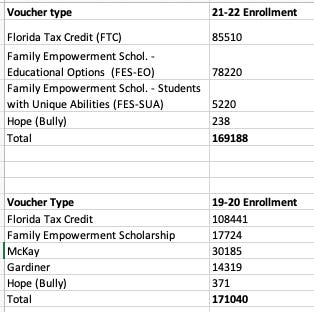






I knew it was a bad situation but had no idea just how bad it is! Your Power Point was great! Thanks